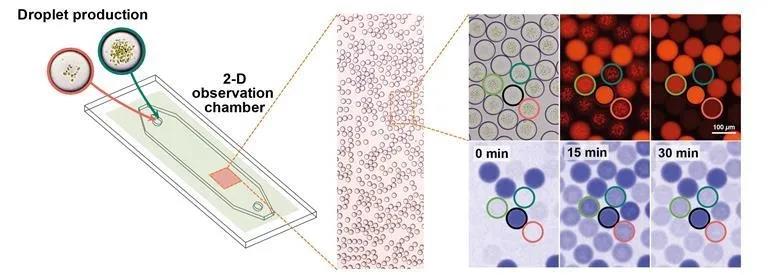Time:2020-05-11 Reading:18378
Engineering materials and enzymes that mimic individual photosynthetic processes using sunlight, such as water decomposition and CO2 fixation, are not novel. However, replicating the complexity and efficiency of plant cell chloroplasts - which both capture and utilize light energy for multistep synthesis - is a far greater challenge.
In 2016, the team of Tobias Erb at the Max Planck Institute for Terrestrial Biology located in Marburg, Germany, developed an artificial carbon fixation pathway. This cycle, known as Cetch (crotonylCoA/ethylmalonyl-CoA/hydroxybutyryl-CoA), employs a series of both natural and synthetic enzymes to transform CO2 into organic molecules, doing so even more efficiently than the plant carbon cycle[1]. Recently, Erb's team collaborated with Jean-Christophe Baret's team from the University of Bordeaux, France. Using microfluidic technology, they combined the Cetch cycle with the light energy collecting source of chloroplasts to produce cell-sized droplets that act as synthetic chloroplasts[2].

Each cell-sized droplet functions as an individual artificial chloroplast. In microscope images, thylakoid membranes (visible in the top row) use light to produce both NADPH (seen in the bottom row) and ATP. These energize the enzyme cascade reaction that fixes CO2.
The energy for the Cetch enzyme's CO2 reduction chemical
reactions is derived from spinach. Researchers isolated thylakoid membranes
from spinach chloroplasts that convert light into energy-rich compounds,
including adenosine triphosphate. Using microfluidic technology, they then
encapsulated these membranes with the Cetch enzyme within oil-in-water
microdroplets. Each cell-sized droplet is capable of conducting all necessary
reactions, solely relying on light to transform CO2 into acetic acid.

The cascade reaction of the Cetch enzyme turns CO2 into
acetic acid, all powered by the light-gathering energy of the thylakoid
membranes.
"Our work is the first to demonstrate that an
alternative, autonomous photosynthetic system can be realized from single parts
and modules at a microscopic scale," stated Erb, "To the best of our
knowledge, this is the first proof that CO2 can be continuously and
multistep-transformed into carbon compounds.”
References:
1. T Schwander et al, Science, 2016, 354, 900 (DOI:
10.1126/science.aah5237)
2. T E Miller et al., Science, 2020, DOI: 10.1126/science.aaz6802
Source: Chemistry World